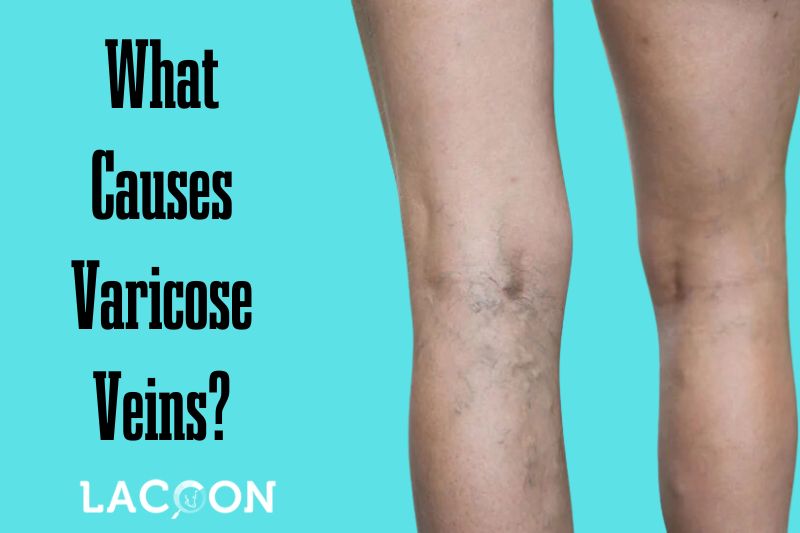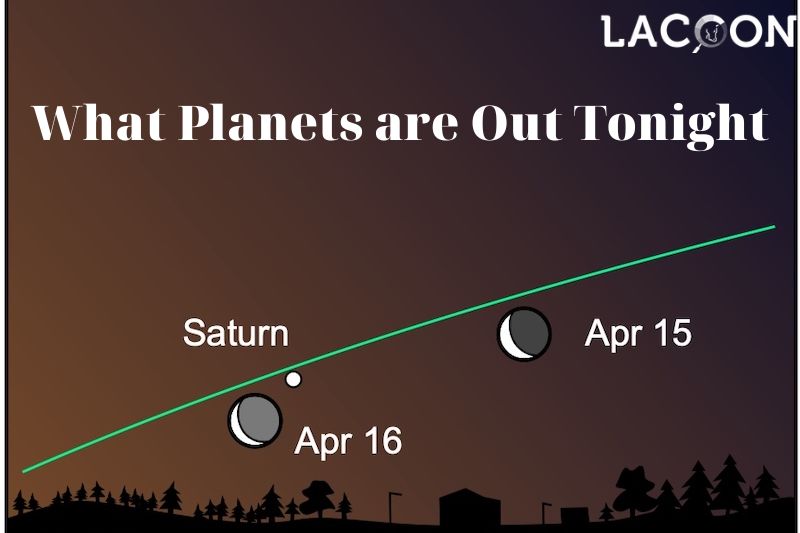Varicose veins are very common and affect a lot of people all over the world. Large, twisted, often painful veins can show up on the legs, feet, and other body parts.
Older people and women are more likely to have them. Some people worry about how their varicose veins look but they can also cause pain, swelling, and other problems.
They can be prevented and treated more effectively if you know what causes Varicose Veins. In this article, Lacoon will discuss what causes varicose veins and how to treat them.
Overview Of Varicose Veins

Varicose veins happen when the tiny valves inside veins that help control the flow of blood get weak or broken.
Because of this weakness, blood can move backward and pool in the veins, making them swell and twist.
Varicose veins can happen anywhere on the body, but they are most common in the legs and feet. This is because standing or walking puts more pressure on these veins.
Symptoms
Many people with varicose veins experience no symptoms, while others may have mild to severe symptoms, including:
- Bulging, twisted, blue or dark purple veins that are visible beneath the skin
- Aching or heaviness in the affected leg
- Swelling in the ankles or feet
- Muscle cramps, particularly at night
- Itching around the vein
- Discolored skin or inflammation in the area surrounding the vein
In severe cases, varicose veins can lead to complications such as skin ulcers, blood clots, and bleeding from the affected veins.
Causes
Several factors contribute to the development of varicose veins, including:
- Age: As people age, the veins’ valves become weaker and less effective, increasing the likelihood of varicose veins.
- Genetics: A family history of varicose veins increases an individual’s risk.
- Gender: Women are more likely than men to develop varicose veins, due to hormonal changes that affect vein walls.
- Pregnancy: Pregnant women have an increased risk of varicose veins due to hormonal changes and the added pressure on veins from the growing uterus.
- Obesity: Excess body weight puts additional strain on the veins, increasing the risk of valve damage.
- Prolonged standing or sitting: Remaining in one position for long periods can cause blood to pool in the veins, leading to varicose veins.
Increased Risk

Certain factors can increase a person’s risk of developing varicose veins, including:
- A sedentary lifestyle: When you don’t move your body enough, it can cause your blood to not flow well and put extra pressure on your veins.
- Smoking: Tobacco use can damage blood vessels and decrease circulation, leading to varicose veins.
- Occupation: Jobs that require long periods of standing or sitting can contribute to the development of varicose veins.
Other Conditions
Occasionally, varicose veins can be attributed to other underlying factors, such as:
- A prior blood clot
- Swelling or a tumor in the pelvic region
- Abnormal blood vessels.”
Treating Varicose Veins
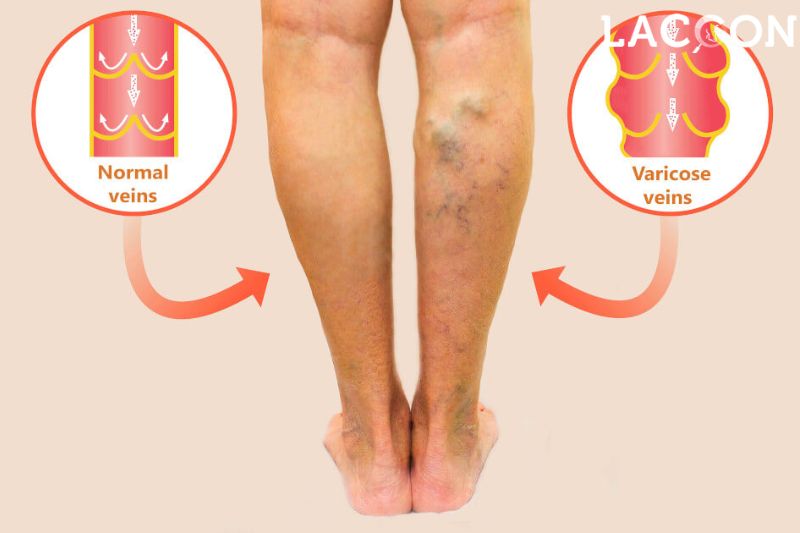
Treatment options for varicose veins vary based on the severity of the condition and the patient’s preferences. Some common treatments include:
- Compression therapy: If you have varicose veins, you can wear special socks called compression stockings. These can help your blood move better and make the swelling, pain, and discomfort feel better.
- Lifestyle changes: Losing weight, exercising regularly, avoiding prolonged standing or sitting, and elevating the legs when resting can all help ease symptoms and prevent varicose veins from worsening.
- Sclerotherapy: This is a little operation that doesn’t need a big cut. It means putting some special medicine into the veins that are causing problems. This makes them collapse and your body will soak them up later.
- Endovenous laser treatment (EVLT) and radiofrequency ablation (RFA): These treatments use heat to close off the affected veins and send blood flow to healthier veins. Both methods are not too invasive and don’t take long to heal from.
- Surgery: In serious cases, the damaged veins may need to be removed through surgery, such as vein stripping or phlebectomy.
Preventing Varicose Veins
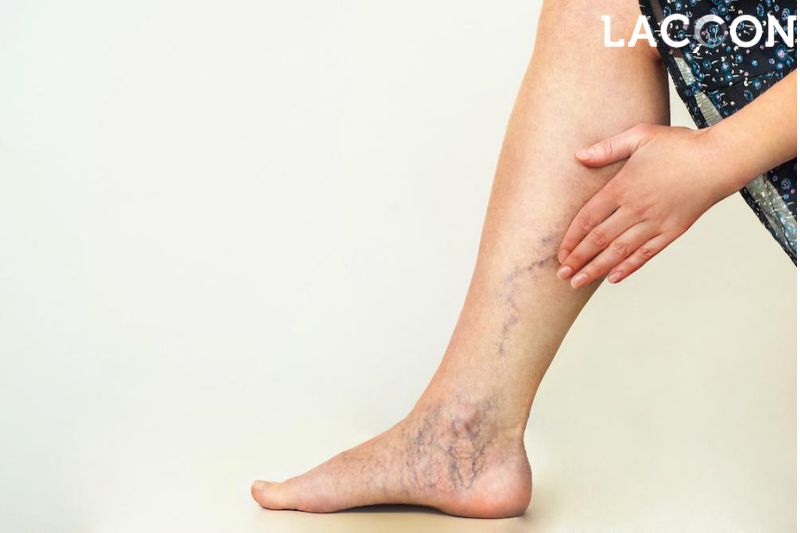
While not all cases of varicose veins can be prevented, the following measures can help reduce the risk of developing them or minimize their severity:
- Maintain a healthy weight: Excess weight puts additional strain on the veins, so maintaining a healthy weight can help prevent varicose veins.
- Exercise: Physical exercise improves blood flow and makes the leg muscles stronger, which helps the veins stay strong.
- Avoid prolonged standing or sitting: You can still have a good life even if you have varicose veins. Just be healthy, see a doctor, and do things to keep yourself safe.
- Elevate the legs: Raising the legs above the level of the heart when resting can help improve blood flow and reduce the risk of varicose veins.
- Wear compression stockings: For those at risk of developing varicose veins, wearing compression stockings can help improve blood flow and prevent the condition from worsening.
Types of Varicose Veins
There are several types of varicose veins, including:
- Trunk varicose: These are large, swollen veins that are often visible beneath the skin’s surface. They are the most common type of varicose veins.
- Reticular varicose: These are smaller, red or blue veins that form a network beneath the skin. While they can cause discomfort, they are usually less severe than trunk varicose veins.
- Telangiectasia varicose: Also known as spider veins, these are small, red or blue veins that form a web-like pattern on the skin. They are usually harmless and more of a cosmetic concern than a medical issue.
FAQs
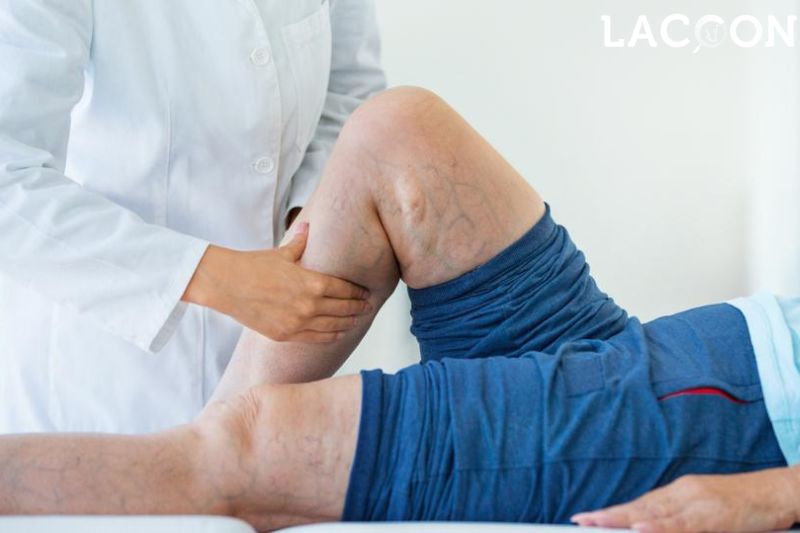
Can varicose veins disappear without treatment?
No, varicose veins cannot disappear on their own. However, there are various ways to manage and reduce their appearance without the need for medical treatment or surgery.
At what age do varicose veins usually appear?
While the risk of developing varicose veins increases after the age of 50, anyone can develop them at any age.
Which foods should be avoided for varicose veins?
Fried foods, processed meats, white bread, and booze are all known to make people with varicose veins feel worse. Milk and cheese can also cause constipation, which can make the swelling of the veins worse.
Is it common for young adults to have varicose veins?
Even though varicose veins are more common in older people, young adults in their 20s or even children can still get them. This is especially true if the condition runs in the family.
Conclusion
Varicose veins are a common disease that can make people feel uncomfortable and worry about how they look. When people know the causes, symptoms, and risk factors, they can make better choices about how to treat and prevent the problem.
If you have varicose veins, you can still live a happy life by being healthy, getting help from a doctor, and doing things to keep yourself safe. Thanks for your reading!

